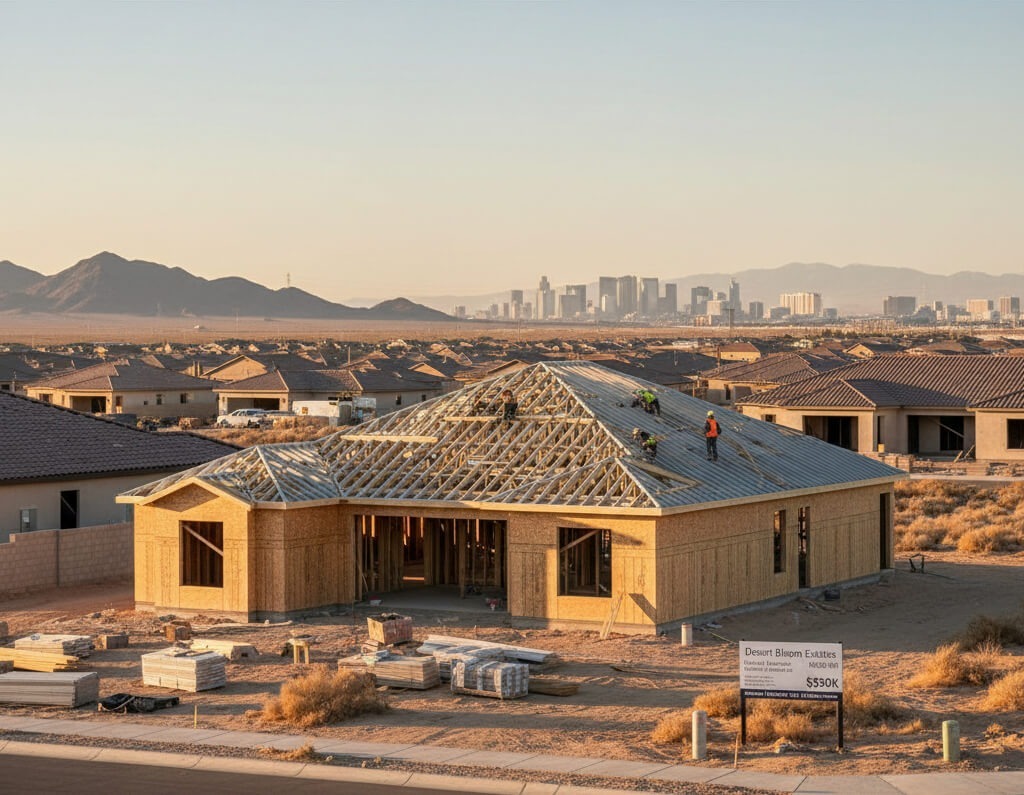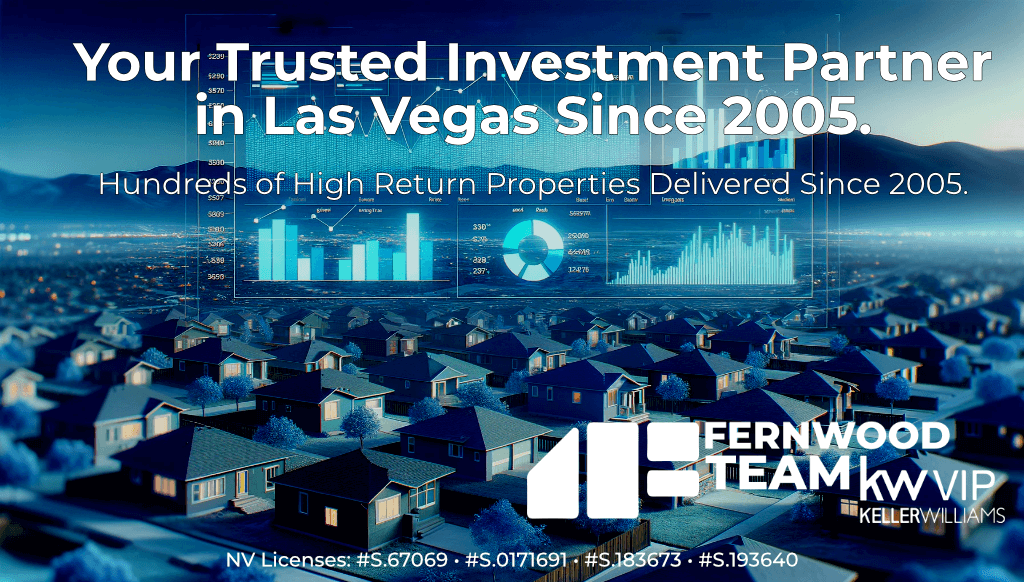
In this post, I’ll analyze and compare the projected returns between stocks and rental properties. As some of you are financial professionals, I welcome your feedback and insights. Thank you A.S. for your guidance!
The question I want to answer is:
If I invested $100,000 today in both stocks (including mutual funds and other liquid investments) and real estate, then sold after 5 years, which would generate the higher return?
The measurement tool I will use is the IRR. To make the comparison as “apples-to-apples” as possible, I made several assumptions, which are listed below.
- The projected year-over-year return from the stocks is 8%. If you have invested in the stock market for a while, you will agree that a consistent 8% annual return is very impressive. I know some of you are thinking, what about Netflix, Nvidia, Tesla, etc. they’ve returned way more than 8% a year! But how sure are you that you can pick the next Nvidia or Tesla? Would you put all your allocated stock funds into the stocks that you think are going to be the next Nvidia, Tesla, Palantir, etc?
- No dividends (cash flow) will be paid from the stock holdings. If you assume a 8% annual return, the odds of also getting any dividend from these stocks are pretty much 0.
- The purchase price of a rental property is $400,000. This is very typical for the properties that we target. The projected annual appreciation is 8%. If you read our 2025 and 2024 Investor Outlooks, you will see that a 8% annual return is very likely (again, only for the property profile that we target.)
- The initial rent for the property is $2,000/Mo. We often exceed this but to be conservative, we will use $2,000/Mo. The projected annual rent growth is 6%/Yr. Again, based on the analysis in our 2025 and 2024 Investor Outlooks, this is probable.
- The financing for the property is 25% down, 30-year fixed, 7% interest rate. So, an initial investment of $100,000. (The latest quote we received from a lender is 25% down, 6.625% with 1.5 pt. or 7.125% no point).
- The property tax for the rental property is $2,200, or 0.55% of the purchase price, typical for the properties we target. The insurance is $1,000/Year, which is also typical for our properties.
To summarize the assumptions:
| Investment Type | Stock | Real Estate |
|---|---|---|
| Initial investment | $100,000 | $100,000 |
| Value growth | 8%/Yr | 8%/Yr |
| Loan assumptions | N/A | 7%, 30 Yr, fixed |
| Initial income | N/A | $2,000/Mo |
| Capital gains rate | 15% | 15% |
| Disposal cost | 0% (1) | 5% (2) |
| Depreciation recapture rate | N/A | 25% |
| Depreciable amount | N/A | 80% (3) |
| Depreciation period | N/A | 27.5 Yrs (4) |
| Hold period | 5 Yrs | 5 Yrs |
| Fee to sell stock | $0 | N/A |
| Marginal income tax rate | 40% | 40% |
| Property tax (Yr) | N/A | $2,200 |
| Insurance (Yr) | N/A | $1,000 |
Notes
- I assumed there was no transaction fee to sell the stocks.
- This includes commissions and other related sales costs.
- Only structures (improvements) can be depreciated, while land cannot. The assumption is that 80% of the purchase price represents improvements, and 20% represents land cost.
- The IRS specifies a 27.5-year depreciation period for non-commercial investment real estate.
Calculating IRR from the Stocks
- Initial investment: $100,000
- Annual Growth Rate: 8%/Yr
- Holding Period: 5 years
- Tax Rate on Sale: 15% (capital gains)
Calculate the future value of the investment
The future value (FV) of the investment after 5 years can be calculated using the formula for compound interest:
- FV = PV x (1 + r)^n
- FV = $100,000 x (1 + 8%)^5 ≈ $146,933
Calculate Tax Due on Sale
- Gains = $146,933 – $100,000 = $46,933
- Tax: $46,933 x 15% ≈ $7,040
After-Tax Proceeds
- After-tax proceeds: $146,933 – $7,040 ≈ $139,893
Cash Flow By Year
- Year 0: -$100,000
- Year 1: $0
- Year 2: $0
- Year 3: $0
- Year 4: $0
- Year 5: $139,893
Calculate IRR based on the above cash flows
IRR ≈ 6.9%
Calculating IRR from the Rental Property
Investment factors
- Purchase price: $400,000
- Down payment: 25% x $400,000 = $100,000
- Financed amount: $400,000 – $100,000 = $300,000
- Loan terms: 7%/Yr, 30 year term. Rate is .07/12 or 0.00583/Mo
- Debt service: P × (r x (1 + r)^n) / ((1 + r)^n – 1) = $300,000 × ((7%/12) x (1 + (7%/12))^360) / ((1 + (7%/12))^360 – 1) ≈ $1,996/Mo
- Principle balance at the end of year 5: P * (1 + r)^60 – PMT * ((1 + r)^60 – 1)/r = $300,000 * (1+0.00583)^60 – $1,996 * ((1+0.00583)^60 – 1)/0.00583 ≈ $282,318. I will use this as the mortgage repayment amount.
Calculating the future value of the property
- FV = PV x (1 + r)^n
- FV = $400,000 x ( 1 + 8%)^5 = $587,731
Calculate annual depreciation
- Purchase Price: $400,000
- Depreciable amount: $400,000 x 80% ≈ $320,000
- Annual depreciation: $320,000 / 27.5 ≈ $11,636
Calculate depreciation recapture after five years
(The depreciation recapture tax rate is 25%.)
- $11,636/Yr x 5 Yrs x 25% = $14,545
Calculate the cost to sell:
- $587,731 x 5% = $29,387
Calculate net proceeds from the sale at the end of Year 5
- Net proceeds = Sale Price – Depreciation Recapture – Cost to Sell – Mortgage Repayment = $587,731 – $14,545 – $29,387 – $282,318 = $261,481
Calculate annual net cash flows for each year
- Initial Investment: -$100,000
- Year 1 Net Cash Flow = (Rent/Mo – Debt Service/Mo) x 12 Mo/Yr – Property Tax – Insurance – Income Tax = ($2,000 x (1 + 6%)^0 – $1,996) x 12 – $2,200 – $1,000 ≈ -$3,152. No income tax is due.
- Year 2: ($2,000 x (1 + 6%)^1 – $1,996) x 12 – $2,200 – $1,000 ≈ -$1,712. No income tax is due.
- Year 3: ($2,000 x (1 + 6%)^2 – $1,996) x 12 – $2,200 – $1,000 ≈ -$186. No income tax is due.
- Year 4: ($2,000 x (1 + 6%)^3 – $1,996) x 12 – $2,200 – $1,000 ≈ $1,432. No income tax is due since the annual depreciation ($11,636) exceeds the net cash flow.
- Year 5: Net Cash Flow + Net proceeds from the sale = ($2,000 x (1 + 6%)^4 – $1,996) x 12 – $2,200 – $1,000 + $261,481 ≈ $264,628
Summarizing Cash Flows
- Initial Investment: -$100,000
- Year 1: -$3,152
- Year 2: -$1,712
- Year 3: -$186.
- Year 4: $1,432
- Year 5: $264,628
Calculate IRR based on the above cash flows
IRR ≈ 20.7%
What if you had a $10,000 maintenance or vacancy expense in year 2? Below are the revised cash flows:
- Initial Investment: -$100,000
- Year 1: -$3,152
- Year 2: -$1,712 – $10,000 = -$11,712.00
- Year 3: -$186.
- Year 4: $1,432
- Year 5: $264,628
Calculate IRR based on the above cash flows:
IRR ≈ 19.1%
Conclusion
Comparing quality stocks and quality real estate, real estate investments achieve a higher IRR through three key advantages: growing rental income, debt leverage, and tax benefits, even at today’s higher interest rates. Together, these create stronger cash flows and better overall returns than stock investments, which primarily depend on price appreciation without providing ongoing income or tax advantages beyond capital gains. If and when the interest rates drop, the income from real estate will be even higher.






